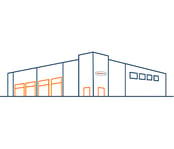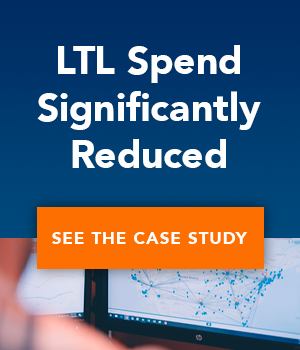Freight consolidation, often referred to as retail consolidation, is a widely-used practice across the logistics industry. The process combines freight from multiple shippers and builds more efficient truckloads, resulting in improved efficiency and profitability for carriers and shippers alike.
Big box retailers like Walmart represent the final destination for the majority of this freight, and they have demanding delivery standards that are becoming difficult to meet without technology.
Transportation Management Systems (TMS), Artificial Intelligence (AI) and real-time tracking are three types of technology that are leveraged to comply with these expectations and anticipate new trends.
Leveraging TMS (Transportation Management Systems) for Retail Consolidation
A TMS is a software that moves your goods and streamlines the execution, planning, and optimization of your organization's transportation needs.
It works to streamline retail consolidation by taking the guesswork out of the shipment planning and execution involved in retail consolidation. A TMS generates routing plans, optimizes delivery processes, integrates delivery data, and manages changes.
These capabilities ensure that you are matching trucks to the optimal loads, according to the retailer specifications. A TMS also provides you with real-time tracking, so trucks never go missing and deliveries are on-time.
One national food manufacturer reduced retail compliance chargebacks by 87% after implementing a TMS.
Retail consolidation is a complex jigsaw puzzle and using a TMS to manage it not only optimizes the process, but also improves your supply chain efficiency and reduces costs.
The Impact of AI and Machine Learning on Freight Consolidation
AI and Machine Learning (ML) are changing the way we manage Freight Consolidation. ML models analyze historical data and market trends, and AI applies those learnings to predict future needs and optimize processes.
When applied to demand planning and freight capacity, AI forecasts the demand for a product or service and anticipates how that will affect capacity. These insights give you a crucial head start into planning, meaning that you are not scrambling during a high demand time.
ML also highlights opportunities for dynamic pricing, load optimization, and freight scheduling. You can optimize your shipping schedule and transportation costs by taking advantage of lower rates, fuller loads and more efficient routes.
These tools provide crucial insights into time-saving and cost-effective practices that are essential for freight consolidation.
Real-Time Tracking and Visibility Solutions for OTIF Compliance
In freight and retail consolidation, On-Time In-Full (OTIF) compliance is the cardinal rule. OTIF measures how well a company delivers products to a retailer within the specified delivery window and in the correct quantities. It is a combination of two components: 1. On-Time - Whether the delivery arrived on time and 2. In-Full - Whether the correct items and quantities were delivered.
All companies have a mandatory OTIF compliance rate for their suppliers. The larger the company, the higher the rate, with retailers like Walmart at 99%, but a solid benchmark score is between 80-90%. Falling below this rate means falling out of compliance and will jeopardize future business. It’s imperative that retailers and suppliers maintain the required OTIF score.
GPS tracking provides real-time visibility and location updates for your freight, and for specialized cargo, Internet of Things (IoT) asset tracking can monitor the container temperature to avoid potential spoilage. Utilizing this technology ensures better delivery performance and improves your OTIF rate.
How Automation is Revolutionizing Retail Consolidation
AI is already commonplace in retail consolidation, and its applications continue to grow with multiple benefits. The next iteration of advancement showcases how this technology will continue to automate the logistics industry, including the consolidation process.
Picking robots and autonomous mobile robots (AMRs) are being implemented in the warehouse at higher rates and will ultimately become an industry standard over the next few years. These machines are more efficient and accurate at fulfilling orders, moving loads, and organizing inventory.
Carriers, shippers and 3PLs leverage AI to monitor shipping patterns, receive notifications for delays and modify routes to avoid them. AI can also automate manual processes, such as measuring, weighing and photographing cargo. A McKinsey study states that companies that have already integrated AI into their operations have seen a 15% reduction in cost reduction, a 35% decrease in inventory levels and 65% increase in service levels.
Conclusion
With the “Amazon Effect” cemented as an industry standard, retail companies must keep up with breakneck shipping expectations to stay relevant and profitable. More demand on retail means more pressure on the logistics industry.
Technology, such as TMS, AI, and real-time tracking, are essential to meeting the expectations of retail consolidation. These tools provide real-time visibility, transportation and planning capabilities that improve efficiency, reduce costs and increase customer satisfaction, and they will continue to transform and automate the logistics space in the future. For more information on how technology can improve your supply chain, reach out to our team for a quote.









.png)

